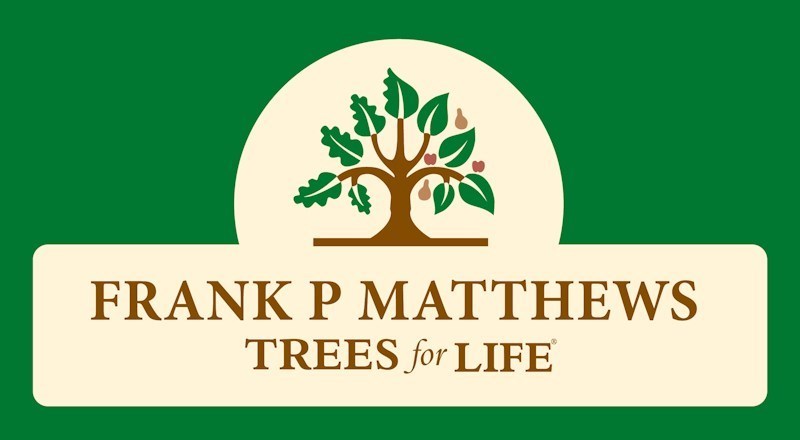Frank P Matthews Tree Care Tips
Planting - Dig a hole roughly twice the size of the pot and back fill with some general purpose compost. We recommend also using our ‘rootgrow’ ™ planting partner to aid establishment. The top of the soil in the pot should be at about ground level. Water well and firm in, making sure there are no air pockets. If the tree is in an exposed site use a stake and tie to keep it steady for the first few years whilst it gets established. And if there is any danger of rabbits then put a guard around the trunk or they may strip the bark and harm the tree!
Watering - Young trees will need to be watered in the first season, especially if planted in the spring. A full watering can twice a week will help the tree put strong roots down, more if the weather is dry. Trees planted in the autumn should require less watering as the roots will have had the winter to settle in. If your tree is to be kept in a container then more frequent watering is likely to be necessary, especially in hot weather.
Feeding - Trees do not need fertiliser unless the soil is particularly poor or they are being kept in a container. If so, a general liquid fertiliser applied in February or March before spring growth is ideal.
Mulching - A good mulch of bark chippings around the base of the tree will reduce competition for nutrients from grass and weeds and make the tree healthier and stronger. A circle of mulch covering at least a foot from the base is perfect. Do not apply weed killers such as glyphosate around young trees as it could kill them!
Pruning - We will have done all the necessary formative pruning on your tree. Many trees, including ornamentals, can be pruned hard in winter to reduce their size, check the colour label or our website for more information. Apples and pears can be pruned at any time of year; stone fruit, e.g. plums and cherries, are best pruned in late summer. Pruning off tips in late June/early July will encourage flower and fruit buds the following year; winter pruning encourages more vegetative growth. Trained fruit trees (especially step overs and espaliers) should have vertical growth pruned back regularly. Prune off unproductive ‘feathers’ (lower shoots) on fruit tree stems and remove any suckers that may appear from the base.
Fruit Thinning - Modern varieties, especially on dwarf rootstocks, set heavy crops and should be thinned in late June (much of the fruit will self thin by this time). During the first year of planting it is best to remove most of the fruit to allow the tree to put energy into producing strong roots and branches. This may need to be extended into the second year if the tree has not made reasonable extension growth. Leaving a few to taste is fine! Fruit in direct sunlight will gain the best colour.
Pest and Disease - Pests will affect trees from time to time and can be tolerated in small amounts as they do no harm. They generally appear on the undersides of the leaves so always turn leaves over for early detection! Severely affected leaves can be removed by hand on young trees. Most varieties offered will have some tolerance of diseases such as scab and mildew and the worst effected fruits can be removed when fruit thinning, always bin or burn affected leaves and rake up any in the autumn. Prune off any dieback to good wood with clean secateurs
Find our range of fruit trees online here!








